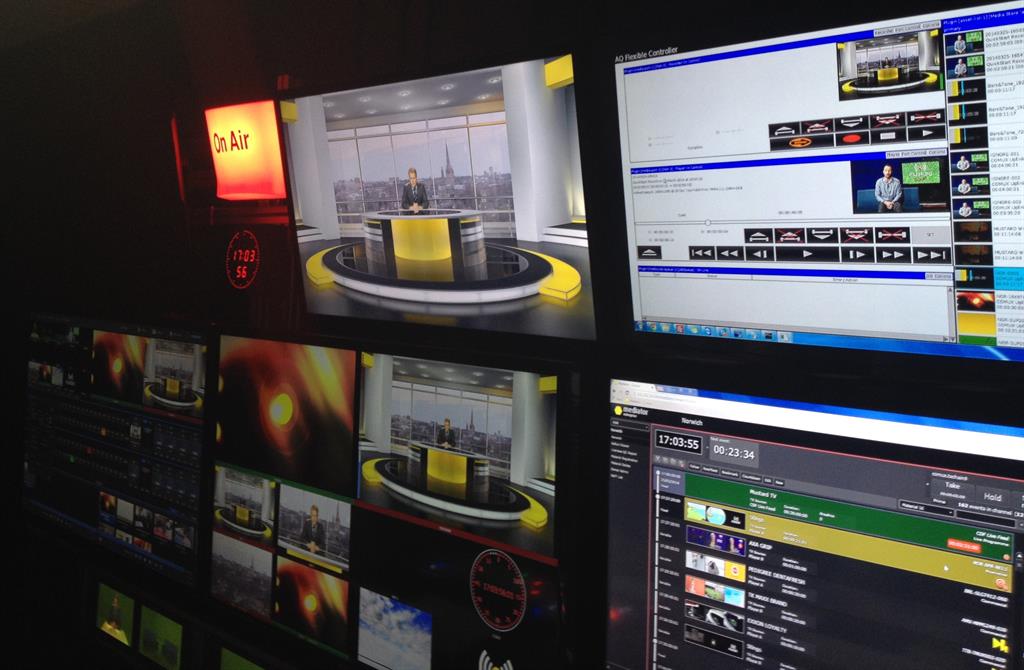aQ Broadcast Introduces New aVS Version 4 Firmware
aQ Broadcast Limited, which designs, develops and manufactures an integrated range of newsroom, scripting, automation and media management software alongside video server and production suite hardware is launching Version 4 firmware for its aQ Video Server products at IBC 2014.
The ‘aVS’ Video Server range is comprised of innovative and modular video servers that scale from an entry-level, two-output unit to large, flexible and redundant storage and port solutions. The all new firmware introduced at IBC includes a revolutionary GUI, designed entirely as a client application that can run locally on the server and/or remotely on Windows or custom Linux workstations on the same network.
As a collaborative client application, the GUI provides simultaneous access for multiple users in different locations. Some functions provide for user input from any location, while other functions can be controlled from one location and monitored from others.
The GUI is also configurable. Plug-ins can be arranged with different sizes and locations and can be saved as a skin, enabling different views to be used at different times by different users.
A new gadget bar provides clear status monitoring for the overall system, including memory and CPU utilisation, drive capacity, RAID condition, service status and licence expiry. The layout of the monitoring elements can be customised and the elements configured to display status for both local and remote aVS units.
aQ Broadcast CEO Neil Hutchins said, “The new aVS V4 GUI infrastructure is exceptionally responsive and its redesigned port controls operate very quickly for critical functions.”
Complete GUI independence means that underlying devices (e.g. I/O ports) continue to operate when GUI is shut down, making it possible to start an operation on one workstation and complete it on another.
New operational modes include looped delay, with a new ‘manager’ panel that provides a single point of control over multiple ports. Content is recorded in a configurable buffer and once the buffer limit has been reached, new content is recorded over the oldest material. The recorded buffer can be played back from multiple ports with different offsets, so one port could play out with a one-hour delay, another with a two-hour delay, for instance. Live delay with output override is a similar mode in which a live feed on one port can be played out on another with configurable delay.
Pre-roll recording allows incoming content to be stored in a loop. When required, the loop can be saved so that the current content is committed to a clip. Recording to the same clip then continues as normal so that the size of the clip increases until recording is complete. This ensures that live events can be recorded efficiently without having to record unnecessary content.
Looped recording with segment save allows continuous recording into a loop of configurable size – the oldest material is replaced with the newest – but also for content within the loop to be marked and saved as a new clip. This allows short but important elements within a long event to be saved as individual clips for highlight or review purposes.
Continuous recording with chunking enables recording to take place continuously, but for the recorded content to be automatically split into individual clips with no loss of material between the chunks.
Extended sequence handling includes the ability to loop individual or groups of clips, to pause at the end of a clip and to transition between clips in a sequence, for example, to fade or wipe between one item in the sequence and the next.
Output effects enables a port’s output appearance to be manipulated on demand, for instance to trigger a ‘squeezeback’ that reduces the size of an image to allow graphics to be displayed without obscuring the image.
Finally, the aVS V4 server has an action review system that includes multi-channel recording and multi-viewer playback.
This provides a simple, single point of control for simultaneous recording from multiple camera feeds that are then linked for playback within a split or zoomed view.
aQ Broadcast will be at IBC 2014 on stand 9.B14ci.

Get the TV Tech Newsletter
The professional video industry's #1 source for news, trends and product and tech information. Sign up below.
